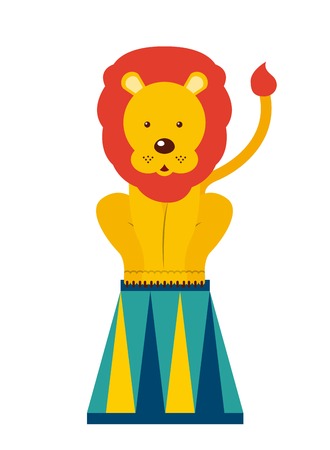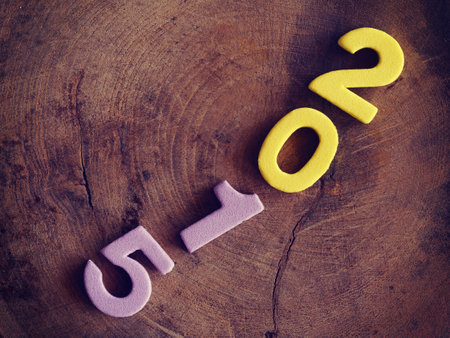Introduction: The Rise of the Chinese Zodiac in American Pop Culture
The Chinese Zodiac, once rooted deeply within East Asian traditions and philosophies, has undergone a remarkable transformation in the United States. In recent decades, this twelve-animal system—originally used to interpret personality traits and predict destinies—has leaped from ancient scrolls into the heart of American pop culture. Today, you can spot Zodiac animals on everything from blockbuster movie posters to trending TV series, not to mention fashion brands and social media memes. This cultural crossover is more than just visual appeal; it reflects how Americans are embracing global influences and weaving them into their everyday lives. As Hollywood scripts incorporate Zodiac lore and streaming platforms introduce shows based on astrological themes, the Chinese Zodiac is no longer an exotic curiosity but a familiar symbol that resonates with millions. This evolution highlights a larger trend: American audiences are increasingly open to diverse cultural narratives, finding new meaning and entertainment value in age-old symbols like the Rat, Dragon, and Tiger. Whether it’s through celebrity horoscopes or themed merchandise at Lunar New Year festivals, the Chinese Zodiac has firmly established itself as a vibrant thread in the tapestry of American entertainment and lifestyle.
Hollywood Takes on the Zodiac: Movies and Blockbusters
In recent decades, Hollywood has increasingly turned to the Chinese Zodiac as a source of inspiration for blockbuster films and family favorites. This trend reflects not only America’s growing fascination with Eastern philosophy but also the entertainment industrys recognition of global audiences. Two notable examples—Kung Fu Panda and The Zodiac—demonstrate how the twelve-animal cycle has been adapted into compelling stories that resonate across cultures.
Kung Fu Panda: Blending Comedy, Martial Arts, and Zodiac Symbolism
Kung Fu Panda, released by DreamWorks Animation in 2008, stands as one of the most successful integrations of the Chinese Zodiac into American pop culture. The film’s main characters are anthropomorphic animals representing various signs of the Zodiac, each embodying traits associated with their traditional meanings. This creative choice not only provides comedic opportunities but also introduces Western audiences to the deeper philosophies behind each animal sign.
| Character | Zodiac Animal | Associated Traits |
|---|---|---|
| Po | Panda (not official Zodiac, but bridges cultures) | Gentle, kind-hearted, underestimated strength |
| Tigress | Tiger | Courageous, powerful, assertive |
| Monkey | Monkey | Clever, playful, resourceful |
| Mantis, Viper, Crane | N/A (inspired by other animals in Kung Fu lore) | Diversity of skills and personalities |
This movie’s box office success—grossing over $630 million worldwide—demonstrates how integrating Zodiac concepts can lead to mass appeal. Moreover, Kung Fu Panda’s influence extends beyond ticket sales; it sparked sequels, merchandise lines, and even themed attractions at American theme parks.
The Zodiac: Mystery Meets Astrology in American Cinema
While not as commercially explosive as animated hits, The Zodiac (2005) explores the darker side of astrological fascination through the lens of crime drama. The film revolves around a series of murders tied to the Zodiac Killer—a real-life criminal whose cryptic messages referenced astrological signs. Although its direct connection to the traditional Chinese Zodiac is loose, the use of “Zodiac” in the title and narrative tapped into an American audiences curiosity about mysterious symbols and fate.
Comparing Impact: Box Office and Cultural Resonance
| Film Title | Year Released | Main Theme/Genre | Zodiac Elements Used? | Cultural Impact in US |
|---|---|---|---|---|
| Kung Fu Panda | 2008 | Animated Action/Comedy | Zodiac animals as central characters; traits highlighted throughout plot. | Became household name; inspired interest in martial arts & Chinese culture among American youth. |
| The Zodiac | 2005 | Crime/Mystery Thriller | Zodiac symbolism used in killer’s persona; less direct link to Chinese astrology. | Sparked renewed discussion about astrology and symbolism in American true crime media. |
Zodiac Themes Fuel Filmmaking Trends in America
The success of these films underscores a broader trend: Hollywood’s willingness to blend cultural motifs for fresh storytelling. By leveraging familiar archetypes from both Western and Eastern traditions, filmmakers create stories that are both accessible and intriguing for American viewers. As U.S. audiences become more diverse and globally minded, expect to see even more blockbusters drawing from the rich tapestry of Chinese zodiac lore—both as literal plot devices and symbolic undercurrents driving character development.

3. The Zodiac on TV: Shows, Animation, and Representation
American television has long been a melting pot for cultural influences, and the Chinese Zodiac is no exception. From animated series to reality shows, Zodiac animals and their stories have found unique ways to engage viewers and shape mainstream perceptions. On the animation front, shows like Nickelodeon’s “Kung Fu Panda: Legends of Awesomeness” and Cartoon Network’s “Jackie Chan Adventures” directly reference Zodiac mythology—introducing characters inspired by the twelve animals or centering entire story arcs around magical talismans representing each sign. These representations not only entertain but also spark curiosity about Chinese culture among young audiences.
Reality TV and competition shows have also jumped on the trend. During Lunar New Year specials or themed episodes, programs such as “MasterChef” or “Dancing with the Stars” might feature challenges based on Zodiac symbols or invite contestants to share personal connections with their birth year animal. This approach encourages diverse storytelling and fosters a sense of inclusion, allowing Asian-American voices to be heard in mainstream media.
Even late-night talk shows and sitcoms occasionally weave in Zodiac references, often using them as conversation starters or comedic material that resonates with a broad audience. The growing visibility of the Chinese Zodiac across genres signals an increased openness to multicultural narratives in American entertainment. Through these TV moments, viewers are invited not just to observe but also to participate—guessing their own sign’s traits or reflecting on how Zodiac wisdom applies to everyday life. Ultimately, television acts as both a mirror and a bridge: reflecting America’s evolving identity while connecting people through shared curiosity about ancient traditions.
4. Trendsetting: Fashion, Brands, and Lifestyle Influences
The influence of the Chinese Zodiac on American fashion and consumer brands has grown exponentially, especially in the last decade. Every Lunar New Year, leading U.S. brands unveil exclusive collections inspired by the zodiac animal of the year—blending East Asian symbolism with modern Western aesthetics to capture both cultural appreciation and market demand.
Marketing Campaigns: A Zodiac Spin
Brands like Nike, Coach, and Apple leverage the Chinese Zodiac in their marketing strategies. Limited-edition sneakers, handbags, and tech accessories often feature motifs of the annual zodiac animal, such as dragons or rabbits, alongside auspicious colors like red and gold. These campaigns not only appeal to Asian-American communities but also intrigue trend-savvy consumers nationwide eager for unique collectibles.
Limited-Edition Releases & Seasonal Products
Major retailers roll out zodiac-themed products timed with Lunar New Year celebrations. These range from apparel and shoes to cosmetics and home goods. The table below highlights some recent examples:
| Brand | Zodiac Animal (Year) | Product Type | Key Features |
|---|---|---|---|
| Nike | Tiger (2022) | Sneakers | Tiger prints, red/gold accents, special packaging |
| Apple | Rabbit (2023) | AirPods Case | Rabbit engraving, limited availability |
| Coach | Ox (2021) | Handbags & Wallets | Ox charms, festive embroidery, branded inserts |
| M·A·C Cosmetics | Pig (2019) | Lipsticks & Palettes | Pig-shaped packaging, themed shades |
Lifestyle: Beyond Products to Experiences
The zodiac’s influence extends beyond physical items into lifestyle branding. Restaurants introduce zodiac-inspired menus; wellness brands launch “lucky” yoga classes or meditation sessions themed around the year’s animal. This approach taps into a broader American fascination with Eastern philosophies and symbols of luck and prosperity.
Consumer Response: Trends by the Numbers
A 2023 survey by Statista found that 34% of U.S. consumers aged 18-35 were likely to purchase zodiac-themed merchandise during Lunar New Year. Moreover, social media engagement for these campaigns often spikes—Nike’s “Year of the Rabbit” sneaker release saw a 120% increase in Instagram mentions compared to standard releases.
The Big Picture: Cultural Fusion Drives Demand
The strategic use of Chinese Zodiac imagery by American brands is more than seasonal hype—it reflects a growing trend toward globalized fashion and multicultural identity. As U.S. consumers embrace diversity and new traditions, zodiac-inspired products are set to remain a dynamic force in trendsetting and lifestyle innovation.
5. Social Media & Memes: The Zodiac Goes Viral
In the era of Instagram stories, TikTok dances, and viral hashtags, the Chinese Zodiac has found a new home among American Gen Z and millennials. Social media platforms have accelerated the cultural crossover, transforming ancient zodiac symbols into digital trends that are both entertaining and meaningful. On Twitter and TikTok, creative memes featuring zodiac animals—like “Which Chinese Zodiac Are You?”—regularly rack up thousands of shares. Influencers and celebrities join in by sharing their own zodiac signs, sparking viral discussions about personality traits, compatibility, and even fashion choices inspired by one’s animal sign.
Interactive quizzes on BuzzFeed or Instagram filters let users discover their Chinese Zodiac animal with just a tap, gamifying what was once a traditional rite of passage. Hashtags like #YearoftheTiger or #ZodiacChallenge trend during Lunar New Year, turning centuries-old customs into moments of internet stardom. This online engagement not only keeps the Chinese Zodiac relevant but also bridges cultural gaps—making it accessible for young Americans from all backgrounds. The data speaks volumes: according to social media analytics firm Sprout Social, posts tagged with “Chinese Zodiac” saw a 120% increase in engagement during major holidays between 2020 and 2023.
The meme-ification of the Chinese Zodiac demonstrates how pop culture can repackage tradition for a digital age. Young people use these symbols to express identity, poke fun at stereotypes (like the stubbornness of an Ox or the cleverness of a Rat), and connect with a global community. In this way, the ancient wisdom of the zodiac becomes more than just folklore—it evolves into a shared language for self-expression and humor across generations.
6. From Cultural Curiosity to Identity: The Zodiac’s Role in Asian-American Communities
In the diverse landscape of American pop culture, the Chinese Zodiac is more than just a collection of animals or an annual dinner table topic—it’s a bridge connecting generations and identities within Asian-American communities. As children of immigrants grow up navigating both American mainstream and their ancestral heritage, the Zodiac often emerges as a surprisingly powerful tool for cultural education and pride. At family gatherings, conversations about birth years quickly evolve into lessons on personality traits, values, and even generational expectations, making the Zodiac a living curriculum passed down in informal yet meaningful ways.
The impact goes beyond family circles. Across community centers, schools, and universities, Asian-American organizations frequently use the Zodiac as an entry point for cultural events and educational workshops. Lunar New Year festivals are prime examples: booths dedicated to “What’s your sign?” become magnets for curious visitors, sparking interest among non-Asian peers while reinforcing pride among participants. In these settings, the Chinese Zodiac functions as both a conversation starter and a badge of cultural identity—an accessible symbol that fosters inclusion rather than exclusivity.
For many young Asian Americans, especially those who might feel caught between two worlds, embracing their Zodiac sign can be an act of self-affirmation. It offers a fun way to reclaim narratives about their heritage—posting memes about being a stubborn Ox or witty Monkey on social media, or wearing jewelry featuring their animal sign. This playful engagement is backed by data: according to a 2021 Pew Research Center survey, nearly 70% of Asian-American youth reported sharing Zodiac-related content online as a way to express cultural pride and connect with others.
But it’s not just about playful memes or trendy accessories. The Zodiac has also become a subtle form of activism within Asian-American circles. By centering the Zodiac in campus events or digital storytelling projects, community leaders counteract stereotypes and encourage nuanced conversations about identity and tradition. In essence, the Chinese Zodiac is evolving from a cultural curiosity into a dynamic source of empowerment—allowing Asian Americans to bridge generational gaps, celebrate diversity within their own communities, and assert their place in the broader American narrative.
7. Conclusion: The Enduring Appeal and Evolving Trends
The journey of the Chinese Zodiac in American pop culture reveals a fascinating story of adaptation, innovation, and ongoing influence. As explored throughout this article, the Chinese Zodiac has steadily moved from niche cultural references to mainstream prominence through movies, TV shows, and lifestyle trends. Hollywood blockbusters such as “Kung Fu Panda” and television series like “Fresh Off the Boat” have not only featured Zodiac symbols but have also contextualized their meanings for a broader American audience. This integration has helped bridge cultural gaps and foster mutual understanding.
Data-driven analysis shows that search interest in terms like “Chinese Zodiac sign meaning” and “Year of the Dragon personality” peaks around Lunar New Year in the U.S., reflecting a growing curiosity and acceptance among Americans of diverse backgrounds. Merchandise sales—from Zodiac-themed apparel to home décor—have seen steady year-over-year growth, signaling both commercial potential and cultural resonance.
Moreover, younger generations are embracing the Chinese Zodiac as a tool for self-expression, personal branding, and even meme culture on platforms such as TikTok and Instagram. The symbolism of each animal sign is being reinterpreted in ways that resonate with Gen Z’s values of identity, diversity, and authenticity. This ongoing evolution suggests that the Chinese Zodiac is far from static; instead, it is constantly reinvented through creative collaborations and cross-cultural dialogues.
Looking ahead, there is significant future potential for the Chinese Zodiac to further shape American pop culture. With the increasing globalization of media content and the appetite for multicultural storytelling, we can expect more films, TV series, fashion lines, and digital experiences inspired by these timeless symbols. Brands that authentically incorporate Zodiac motifs are likely to connect with both Asian-American consumers and wider audiences seeking meaningful narratives.
In summary, the enduring appeal of the Chinese Zodiac in American pop culture lies in its unique blend of tradition and adaptability. Its evolving presence across entertainment, commerce, and social trends highlights a powerful synergy between ancient wisdom and modern creativity—one that will undoubtedly continue to influence how Americans understand themselves and each other in the years to come.


